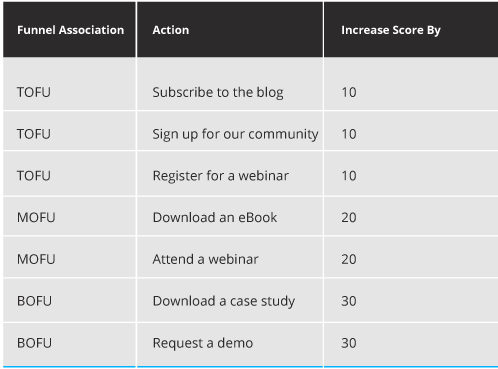Marketing ops is finally seen as a viable career path, and there are many ways that you can level up in this role. However, like in the wider ecosystem, many professionals in the market are experiencing a great many shifts – from job changes and layoffs to downsizing, the system is in flux.
To help empower you for 2023, the Marketing Life Hacks Community (brought to you by SaaScend) held a panel with Salesforce marketing ops influencers to share their tips for career success, and best practices to apply to your everyday role.
The panel consisted of trailblazers (listed below) who gave insights on how marketing operations makes an impact on the business and how to best collaborate with other departments. As well as overall marketing ops best practices, the latest shifts in the industry, and what you can do to advance your career growth.
Marketing Ops Influencers:

Marketing Ops + Change Management
Change management is how one approaches transitioning from the current way of working, to a new (often transformational) way of working. It’s a highly sought after skill, and your venture into change management doesn’t have to be full blown from day one.
As outside pressures rise and influencing factors can strike unpredictably, for marketing and sales teams keeping in close communication with each other is more important than ever. In turbulent times, you need to build bridges, not walls, between teams.
This regular communication may seem a vague conversation when calendars feel squeezed; however, it’s the qualitative insight that can be mutually beneficial for marketing (to tweak qualification criteria they use), and for sales (to receive ‘better’ leads). Pair this with the quantitative insights (e.g. Salesforce reports), and you will be data-driven, with context.
In the spirit of all things ‘ops’, Shannon Greif kicked us off with the importance of regular check-ins, Marketing Qualified Lead (MQL) quality, and marketing attribution reporting.
Scheduled Check-ins
Shannon Grief:
As marketing ops, ensure you have a regular check-in that’s scheduled with your sales team – with a recurring slot, you should begin to see eye to eye.
However frequent your recurring meeting is, ensure you schedule it in everyone’s calendars. This is your chance to learn, so you will want to protect that time and control the session’s agenda. For example the agenda could start off as:
Item #1: Number of leads sent by marketing:
a) Who stood out?
b) Which belonged to relevant accounts?
c) Who closed deals?
After implementing any change, check in each month with the teams involved.
MQLs: Quality Over Quantity
A recurring lead qualification review will help deliver the message: quality over quantity when it comes to new lead volumes. Some marketers will just send MQLs over, hoping that at least some of them stick (just like the classic ‘throw spaghetti at the wall and see what sticks’).

Sending across a high volume of leads means that you run the risk of MQL fatigue. MQL fatigue is when lead scores are higher than they should be. Among the sales team, word spreads to trust lead score – for example, if their colleague/s called a prospect with a high lead score, only for the prospect to say: “wait, who are you?”.
Actively improve the quality of what an MQL means in your organization by:
- Tweaking the definition of MQL to include indicators of quality.
- Evaluating the marketing activities that contribute to the score.
- Encouraging open communication between marketing and sales, where feedback on MQL quality should be constructive and not taken personally.

Make sure you review your lead scores frequently. As businesses evolve, you may find that the qualifying criteria which was great a year ago could very well have shifted.
‘Everyday’ Attribution (Over-Record Actionable Data)
Shannon Greif:
I’ve coined something I call everyday attribution, for admins to work towards. Obviously, these words aren’t a new concept, but together, they mean ensuring that we’re attributing prospect activities by over-recording actionable data
We are only as good as the data we have to report on. With Pardot (or your marketing automation tool of choice) and Salesforce being integrated, you have the opportunity to record, for example:
- MQL date stamps (i.e. the date the prospect became an MQL) – or any date stamps.
- The data required for how we want to segment data.
And if we record these and more actionable data, then, say, two years down the line when somebody asks: “can you tell me how this campaign performed and the outcome of those prospects?”, you will be confident that you do have the answer.
Reporting is one way to prove your worth, and the value of the marketing team, to your organization when the time comes.
Avoiding Micromanagers
We’ve likely all had micromanagers over the years, who want you to ask permission to do X, Y, or Z.
I’ve had to unlearn those ways of working. In reality, I don’t need my manager’s permission so that I can ask sales ops to create me a custom field to record a MQL date stamp, for example.
Instead, I’d keep managers/colleagues in the loop, for example, ‘We’ll soon be able to report on how long it takes for somebody to go from a lead to an MQL’.
When you are learning (entry-level), you do often need step-by-step support – but, in your second, third related role (etc.), you shouldn’t need to ask permission for everything. So, if you are experienced and still feeling limited by ‘sign-off’, you’re in the wrong job. You deserve better with a manager/colleagues who respect you, and respect the process.

Make the ‘Process’ Accessible
If you don’t understand the process, how can you ever expect your team to? Make sure that it is clear and actionable; you can use analytics and AI naturally where appropriate in relation to how users work.
Shannon Greif:
Making the processes accessible starts with you putting yourself ‘in the shoes of’ a marketing user.
I’ve seen many people in our industry say: “I have no idea what the process is; I don’t know if Opportunity contact roles are being used; I don’t know who to assign this prospect to”. But these are things you have to care about.
Analytics and AI make marketers more productive, and reveal insights within data that can’t be seen ‘with the naked eye’. Make analytics accessible to everyone, in other words, ready-to-use, and embedded right where users need the data, contextualizing the record data. Engagement History Dashboards are a great example:
“Give Engagement History Dashboards to the key salespeople, placed on the Account and Opportunity records, so that they can see how prospects related to a particular Opportunity have been engaging with marketing assets. As marketers, we’ll get to take credit for ‘the assist’, so prove to the sales team that your efforts are helping them towards their goal.”
Embracing AI could be phrased as a) having AI ‘meet’ users where and how they work, and b) finding use cases to boost user productivity that also gel naturally.
I know some marketers have switched to using the (drag-and-drop) Lightning email builder. With Einstein Send Time Optimization (STO), AI will determine the optimal send time, on your behalf, the best time to send the email for maximum chance of engagement.
I’ve made the shift towards using STO more often – even in tandem with the Classic email builder, say, if I prefer to code the email myself (which is possible in Classic). I’ve grabbed the recommended send times for the audience I want to target, then returned back to the Classic builder.
AI Changing the Landscape
Stephen Stouffer:
AI has already changed the landscape of every industry – and will only become more mainstream over the next months/this year.
I encourage everyone to go look at Open AI/Chat GPT. Start playing around with it. It is scary how good it is – from generating marketing plans to creating code. I’ve been asking it to write me Salesforce formulas, and it’s been doing it really well – It spits out the formula, I copy and paste into my Salesforce org.
“Keep up with the changing landscape. With trends (just like Chat GPT), the sooner you figure out whether you want to use it (and how to incorporate it into your day-to-day work) the more you further your adaptability.
Diversify or Specialize?
The easy answer in this scenario is diversification, however, there is also value in specialization – a combined approach may be your best bet. Diversify your skills and ‘go deep’. Don’t limit yourself to one platform, but also try to find a specialization within your skill set…
Diversify Your Skills (To Understand Your Organization Better)
Stephen Stouffer:
We’re in an ever-moving technology landscape. Change management is probably the greatest hurdle that RevOps/Marketing Ops have to get over.
You will encounter influences outside of your control – e.g. sales turnover, territory changes, lead scoring/grading criteria changes. However, in diversifying your skills (with the aim to better understand different parts of the business), the better you’re going to be able to do your job, and bring value to an organization.
‘Jack of All Trades’ – A Breadth of Skills Will Serve You Well
Shannon Greif:
Marketers are expected to be a ‘Jack of all trades’ – and while this saying may often be used as an insult, bear in mind that the full quote goes: “Jack of all trades is a master of none – but oftentimes better than a master of one”. You should search for the ‘chinks in your armor’, and fill those by staying up to date with the new tools and technologies. Having a breadth of skills (generalist), will often serve you better than being limited to one particular specialization.
However, I think it’s also important to find a specialization – an area within marketing ops that you enjoy. You should aim to complete your skillset with breadth, but then also go deep with one or two specializations. In other words, ‘own’ your tools, ‘own’ your passion – be the go-to person for that specialization, by having a voice. Whether that’s internally in your own organization, or in the community, speaking up as the expert and saying, “this is the way it should be done”.
Marketing automation isn’t going anywhere – whether you wind-up using Pardot, HubSpot, Marketo, or even Marketing Cloud – we need people who ‘own’ their tools.

Don’t Limit Yourself to One Marketing Automation Platform (When Starting Out)
Lara Black:
Being known as ‘Pardot Pro’ suggests that I only know one marketing automation platform. I went into a consulting role thinking that I would learn others – this ended up not being the case. In that role, there was such a demand for Pardot knowledge that every project I was involved in was Pardot-related.
I have additional Salesforce certifications (beyond the Pardot ones) – Salesforce Admin, Advanced Admin, Education Cloud Consultant – this makes you well-rounded.
Personally, the way I describe my role is: “I help marketers get value out of Salesforce, and help people know what’s important”. I am specialized in marketing reporting from Salesforce. This means that I don’t identify as solely an admin of Pardot any longer (i.e. I don’t do the day-to-day activities in Pardot, like sending emails, doing prospect imports, or campaign association).
If you’re starting out in your marketing automation experience, take the opportunity to learn other platforms.
Learn HubSpot (they have great certifications that cover broader areas of marketing automation). Learn about Pardot when you have the opportunity, and also learn about Marketo when you can. Why? In many ways, these three platforms are very similar – the same concepts, only structured differently.
Having an awareness of more marketing automation tools, means you have a broader scope. For example, should you unfortunately get laid off, you open yourself up to more opportunities: “I know Pardot well. What from my knowledge translates into Hubspot?” Honestly, you may find the first couple of weeks challenging as you figure out where items are located in the menus, but you will soon get your footing.
Building a Personal Brand in Marketing Ops
Having a personal brand means you have created an identity for yourself in your chosen remit. It enables you to connect with a community, and become a recognizable figure. Within this, you share your knowledge and experience surrounding your field.
Stephen Stouffer:
We’ve all heard about the tech layoffs within the industry. I’ve noticed two themes – those who have built a personal brand:
- Are less likely to be laid-off because they’ve established themselves as a staple internally within their organization, and externally within the community. It makes them indispensable from a PR perspective.
- When an unfortunate event happens to them, they’re able to bounce back so much quicker.
I’ve been focusing on building a voice within the ecosystem over the last couple of years. I think it’s super important to bring value by sharing your insight, and being an active member of community Slack channels.
Building a personal brand is easier said than done. It takes discipline and dedication – consistency is the key word here. Every one of the panelists are doing a great job at personal branding – contributing by answering questions on Slack communities, speaking at community conferences.
Here’s some key tips on how to build a personal brand:
Have a Unique Voice, Healthy Debates – and Share Experiment Insights
Stephen Stouffer:
Have an opinion. However, when there are so many people in a community, it can become an echo chamber (repeating the same thoughts). It is hard to have a strong opinion, stick to your guns, and keep to it.
The best conversations that I’ve had have been when someone doesn’t necessarily agree with me, or they would do something in a different way – having respectful debates is totally okay.
For example, with email marketing, you could publish an article about the A/B tests you’ve run, and their performance.
What if we allowed AI to build a marketing campaign strategy, write all the content (email subject line, copy, body, etc), and then have a human do the same thing, independent of the AI. How would the marketing program fully generated by AI stack up against a human?
That’s an example of the type of content I think can make you interesting within the industry, and help you build your personal brand.
So, have a unique voice amongst all the other voices that are saying the same thing. Don’t be afraid to be wrong and learn in the process.

Start today. You can start small, for example, with LinkedIn posts on how to do something, or how to solve a problem.
If you want to dive into contributing to the community, you can look towards reputable Salesforce blogs*. SFBen, for example, is a resource within the Salesforce community that has a great impact, and is reputable*. The SFBen team accepts guest blogs on all topics related to the Salesforce platform.
If you have an idea (and/or a rough outline), reach out to Lucy and her team, and ask: “Does this have a place on your blog?”. It’s a way for you to get a link that’s generated from a well-known blog that you can then repost on your own social media. It all starts to help you position yourself as an influencer within the Salesforce ecosystem.
*Reputable = All content is original (not published elsewhere) and the author receives full credit. Unfortunately, plagiarism has become evermore prevalent in the Salesforce community. The SFBen team actively fights against plagiarism on their contributors’ behalf.
Christina Anderson:
If you’re thinking: “I’m not much of a writer”, the SFBen team can support you through the process. It’s a wonderful opportunity to be able to write on SFBen, and get their expert-level feedback on the content you create. I speak from experience, I always love working with Lucy and the team, and learn each time I work with them.
Rise Above Obnoxious People, ‘Tag In’ – and Bring Others Along to Share the Spotlight
Lara Black:
“There are obnoxious people anywhere you go…”
“It can be challenging to have a persona. Having a voice, making opinions known, being an expert in Pardot – I’m putting myself out there to be questioned.
There will be people who don’t like you for having a voice, for being strident, for being adversarial. I need to not dwell on people who object to me. There are obnoxious people anywhere you go. It took me a long time to let those reactions go. Frankly speaking, find nicer people to be around.
‘Tag In’ those with more experience.
I also have realized that knowing who has more experience is a huge asset. For example, I will get asked questions about JavaScript and I will ‘tag in’ Stephen, or, API stuff, I will tag in Adam Erstelle, or Mike Creuzer.
Bring others along to share the spotlight.
I want to share the credit – to bring more voices up. With more people sharing knowledge, it makes things better for all of us.
But with that, comes your willingness to share the spotlight, and actively bring other people along. For example, I run the Austin Pardot user group. For a long time, I could not find other speakers (this was pre-pandemic, so we didn’t do virtual/hybrid meet-ups), therefore, I was constantly having to come up with content. I am really happy for people from other parts of the US, Canada – even if time zones are challenging, if somebody raises their hand, we will try to make it work – but people don’t raise their hands!
Be a person who is known for helping. That does wonders for your personal brand.
As well as this, always be learning, always be expanding your knowledge – take opportunities to learn additional tools.
For example, when I had graduated, I then went back and took classes in layout design (i.e. InDesign/Adobe Illustrator/Photoshop); while I’m not an expert, my familiarity with these tools would make me a more valuable candidate. And even now, to this day, I continually try new areas, I keep learning skills.

Resume Advice
Lara Black:
I would like to point everyone to Ask A Manager, where the creator advocates a good philosophy for writing your resume. That’s not only bullet points of duties you held, or that, for example, ‘I sent emails every week’. That’s boring, people will skim it. How many emails did you send, what was the impact of your work?
I sent a weekly email to 60,000 recipients with a 28% average open rate. I helped a client improve their open rate from an 8% open rate to a 28% open rate. That’s an accomplishment – not just a duty of your job.
Say ‘Yes’ When You Want to Say ‘No’
Stephen Stouffer:
All my career growth opportunities that I’ve had came from saying yes when I wanted to say no – or maybe I said no and I was forced to do it anyway!
So, get comfortable being uncomfortable, and don’t bet against yourself. You’ll find that what seemed to be a daunting task to tackle, when you start it becomes easier. Push the bounds of what you know today because we’re all going to be constantly learning as we progress through our careers.

Give a Shout-Out: Who Would it Be in the Community?
Who, in either the Salesforce Trailblazer Community, or in the wider marketing operations space, has either shaped your journey – or you have seen make a difference in the community this year?
Shannon Greif
- Stephen: I bounced ideas with Stephen when considering changing jobs
- Lindsey Mark: One of the OG Pardashians. She’s been a great resource to many over the years, personally speaking, I’ve always appreciated her support.
- Everyone in Pardashians and Marketing Life Hacks (Slack communities): I’ll ask questions, get great answers, and in turn, answer questions.
- Adam and Jacob: Sercante Labs are doing wonders. They are releasing really good integrations (I’ve seen demos – they’re really trying to change the game).
- Kate Perez (Merivis): We worked together to develop a Pardot cohort.
Stephen Stouffer
- Pardot Paul (aka. Paul Hancock): I can’t tell you how many times I’ve approached Paul, and we’ve jumped into a Zoom call, and discussed solutions for different problems within Pardot/Marketing Cloud, etc.
- Mike Creuzer: He is just a brilliant person when it comes to anything to do with the Pardot API (Pardot integration into any solution) – including API development. As my role shifted to focus more on integrations, Mike has been so helpful in guiding me, to not fail in all the areas where he’s already experienced blocks. It has been wonderful.
Christina Anderson
- Lucy Mazalon: She works hard to provide valuable content to the Salesforce community. I enjoy every conversation that I have with her – her insight on content, and ‘social listening’ (she always has such a pulse).
Summary
As you continue your journey in 2023 remember these marketing operations influencer tips. Take the time to learn other systems and build a personal brand that is purposed to help others in the community and share the spotlight. Remember to keep an open line of communication with your other departments and collaborate on a regular basis. Be the expert of your systems, trust yourself, and have an opinion.
If you learned something from the panelists or were just inspired by a piece of advice they shared, be sure to give them a shout on social media!
This Pardot article written by:
Salesforce Ben | The Drip
Lucy Mazalon is the Head Editor & Operations Director at Salesforceben.com, Founder of THE DRIP and Salesforce Marketing Champion 2020.
Original Pardot Article: https://www.salesforceben.com/the-drip/salesforce-marketing-ops-influencer-tips/
Find more great Pardot articles at www.salesforceben.com/the-drip/
Pardot Experts Blog
We have categorized all the different Pardot articles by topics.
Pardot Topic Categories
- Account Based Marketing (ABM) (7)
- Business Units (14)
- ChatGPT / AI (3)
- Completion Actions (5)
- Connectors (10)
- Custom Redirects (4)
- Data Cloud (3)
- Demand Generation (8)
- Dynamic Content (7)
- Einstein Features (11)
- Email Delivery (17)
- Email Open Rates (3)
- Pardot A/B Testing (2)
- Email Mailability (16)
- Do Not Email (1)
- Double Opt-in (2)
- Opt Out / Unsubscribe (14)
- Email Preferences Page (6)
- Engagement Studio (16)
- Industries (1)
- Non Profit (1)
- Landing Pages (9)
- Lead Generation (1)
- Lead Management (13)
- Lead Routing (3)
- Lead Scoring (16)
- Leads (3)
- Marketing Analytics – B2BMA (9)
- Marketing Automation (1)
- Marketing Cloud (3)
- Marketing Cloud Account Engagement (4)
- Marketing Cloud Growth (2)
- New Pardot Features (6)
- Opportunities (2)
- Optimization (2)
- Pardot Admin (65)
- Duplicates (1)
- Marketing Ops (1)
- Pardot Alerts (1)
- Pardot API (2)
- Pardot Automations (3)
- Pardot Careers (12)
- Pardot Certifications (4)
- Pardot Consulting (1)
- Pardot Cookies (4)
- Pardot Custom Objects (3)
- Pardot Email Builder (8)
- Pardot Email Templates (10)
- HML (6)
- Pardot Events (17)
- Pardot External Actions (1)
- Pardot External Activities (4)
- Pardot Forms (29)
- Form Handlers (8)
- Pardot Integrations (21)
- Data Cloud (2)
- Slack (1)
- Pardot Lead Grading (5)
- Pardot Lead Source (2)
- Pardot Lightning (1)
- Pardot Migration (1)
- Pardot Nurture / Drip Campaigns (2)
- Pardot Personalization (3)
- Pardot Profiles (1)
- Pardot Releases (18)
- Pardot Sandboxes (2)
- Pardot Segmentation (5)
- Pardot Strategy (7)
- Pardot Sync (2)
- Pardot Sync Errors (1)
- Pardot Tracker Domains (5)
- Pardot Training (3)
- Pardot Vs Other MAPs (4)
- Pardot Website Tracking (2)
- Reporting (22)
- Salesforce and Pardot (31)
- Marketing Data Sharing (2)
- Pardot Users (3)
- Salesforce Automation (5)
- Salesforce Flows (2)
- Salesforce Campaigns (22)
- Salesforce CRM (3)
- Record Types (1)
- Salesforce Engage (3)
- Salesforce Queues (2)
- Security and Privacy (1)
- Tags (3)
- The Authors (540)
- Cheshire Impact (9)
- Greenkey Digital (55)
- Invado Solutions (37)
- Jenna Molby (9)
- Marcloud Consulting (6)
- Nebula Consulting (67)
- Pardot Geeks (44)
- Salesforce Ben | The Drip (242)
- SalesLabX (16)
- Slalom (4)
- Unfettered Marketing (51)
- Uncategorized (1)
- Website Tracking (2)
- Website Search (1)
More Pardot Articles
See all posts
This Pardot article written by:
Salesforce Ben | The Drip
Lucy Mazalon is the Head Editor & Operations Director at Salesforceben.com, Founder of THE DRIP and Salesforce Marketing Champion 2020.
Original Pardot Article: https://www.salesforceben.com/the-drip/salesforce-marketing-ops-influencer-tips/
Find more great Pardot articles at www.salesforceben.com/the-drip/







